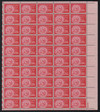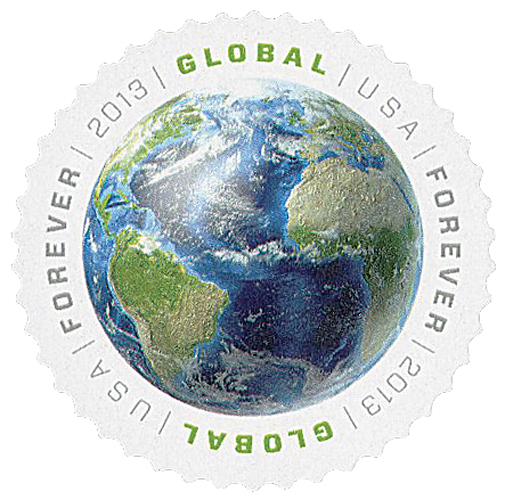
# C44 - 1949 25c Plane & Globe
1949 Stratocruiser and Globe
Printing Method: Rotary press printing
First Non-Stop Non-Refueled Flight Around The Globe
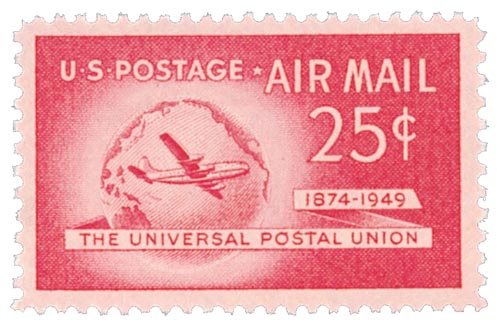
On December 23, 1986, Dick Rutan and Jeana Yeager completed the first non-stop flight around the world without refueling.
As far back as the 1500s, daring explorers have sought to circumnavigate the globe. In the 1520s, a crew of 18 was the first to circle the globe by the sea in a single expedition. The journey took a little over three years.
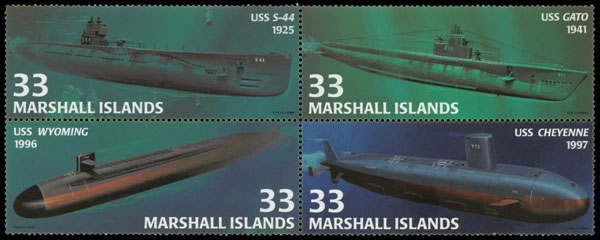
Over the years, there would come many more significant trips around the globe. Spanish explorer Martín Ignacio de Loyola was the first to circumnavigate the world twice. And in the 1760s, the first woman to circle the globe, Jeanne Baret, did so disguised as a man. In the 1780s, Robert Gray was the first American to circumnavigate the globe. In 1909, Teddy Roosevelt’s Great White Fleet was the first fleet to complete the journey, and in 1960, the USS Triton completed the first underwater circumnavigation.
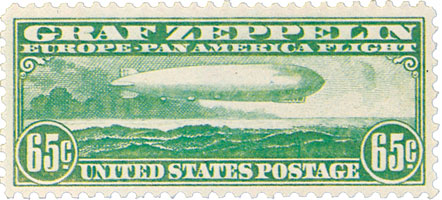
After centuries of accomplishments at sea, the first circumnavigation by plane came in 1924. The US Army Air Service flew 27,560 miles in 175 days, making 57 stops along the way. In 1929, the Graf Zeppelin set a record for the fastest trip around the globe at 21 days.
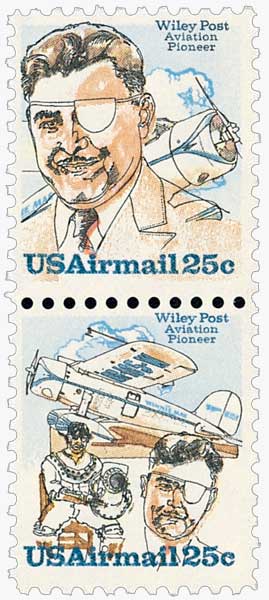
Wiley Post, who made the journey in 8 days, 15 hours, and 51 minutes, bested this feat two years later. Post broke his own record in 1933, completing the journey in 7 days, and by himself, without the aid of a navigator. In 1949, a US Air Force B-50 Superfortress made the first non-stop flight in 94 hours, with four in-air refuelings.
Up until 1986, all trips around the globe had required refueling – either by landing or receiving it in-air from another aircraft. Then in 1981, three friends developed an idea for a new plane that could make the trip without any stops or refueling. While at lunch one day, brothers Dick and Burt Rutan and Jeana Yeager sketched out the plans for a unique plane.
Dubbed the Voyager, the plane would be made of a lightweight composite material, which was mostly graphite, Kevlar, and fiberglass. The plane itself weighed just 939 pounds but could carry over 7,000 pounds of fuel in its 17 fuel tanks. The three built the plane through private funding over the next five years.
After making the necessary test flights, the Voyager took off from Edwards Air Force Base in California at 8:00 am on December 14, 1986, in front of 3,500 press spectators. Although the wing tips scraped the runway as the plane accelerated before takeoff, it was decided the plane was still safe to fly and the journey proceeded. Inside the plane was quite tight and they had planned to switch off every three hours, but that ended up being hard to maintain. Rutan and Yeager had to fly for longer periods at a time and carefully make their way around bad weather, including Typhoon Marge.
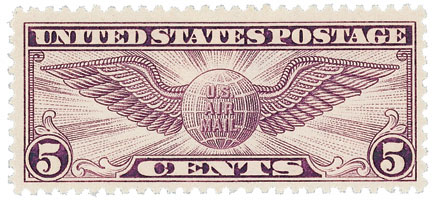
Nine days after leaving Edwards, the plane returned at 8:06 am, successfully completing the first non-stop non-refueled circumnavigation of the globe. Only one other pilot since has succeeded at this feat. Yeager and the Rutans receive the Collier Trophy for their accomplishment and the Voyager is now on display at the National Air and Space Museum in Washington, DC.
Click here to view photos of the Voyager.
1949 Stratocruiser and Globe
Printing Method: Rotary press printing
First Non-Stop Non-Refueled Flight Around The Globe

On December 23, 1986, Dick Rutan and Jeana Yeager completed the first non-stop flight around the world without refueling.
As far back as the 1500s, daring explorers have sought to circumnavigate the globe. In the 1520s, a crew of 18 was the first to circle the globe by the sea in a single expedition. The journey took a little over three years.

Over the years, there would come many more significant trips around the globe. Spanish explorer Martín Ignacio de Loyola was the first to circumnavigate the world twice. And in the 1760s, the first woman to circle the globe, Jeanne Baret, did so disguised as a man. In the 1780s, Robert Gray was the first American to circumnavigate the globe. In 1909, Teddy Roosevelt’s Great White Fleet was the first fleet to complete the journey, and in 1960, the USS Triton completed the first underwater circumnavigation.

After centuries of accomplishments at sea, the first circumnavigation by plane came in 1924. The US Army Air Service flew 27,560 miles in 175 days, making 57 stops along the way. In 1929, the Graf Zeppelin set a record for the fastest trip around the globe at 21 days.

Wiley Post, who made the journey in 8 days, 15 hours, and 51 minutes, bested this feat two years later. Post broke his own record in 1933, completing the journey in 7 days, and by himself, without the aid of a navigator. In 1949, a US Air Force B-50 Superfortress made the first non-stop flight in 94 hours, with four in-air refuelings.
Up until 1986, all trips around the globe had required refueling – either by landing or receiving it in-air from another aircraft. Then in 1981, three friends developed an idea for a new plane that could make the trip without any stops or refueling. While at lunch one day, brothers Dick and Burt Rutan and Jeana Yeager sketched out the plans for a unique plane.
Dubbed the Voyager, the plane would be made of a lightweight composite material, which was mostly graphite, Kevlar, and fiberglass. The plane itself weighed just 939 pounds but could carry over 7,000 pounds of fuel in its 17 fuel tanks. The three built the plane through private funding over the next five years.
After making the necessary test flights, the Voyager took off from Edwards Air Force Base in California at 8:00 am on December 14, 1986, in front of 3,500 press spectators. Although the wing tips scraped the runway as the plane accelerated before takeoff, it was decided the plane was still safe to fly and the journey proceeded. Inside the plane was quite tight and they had planned to switch off every three hours, but that ended up being hard to maintain. Rutan and Yeager had to fly for longer periods at a time and carefully make their way around bad weather, including Typhoon Marge.

Nine days after leaving Edwards, the plane returned at 8:06 am, successfully completing the first non-stop non-refueled circumnavigation of the globe. Only one other pilot since has succeeded at this feat. Yeager and the Rutans receive the Collier Trophy for their accomplishment and the Voyager is now on display at the National Air and Space Museum in Washington, DC.
Click here to view photos of the Voyager.






